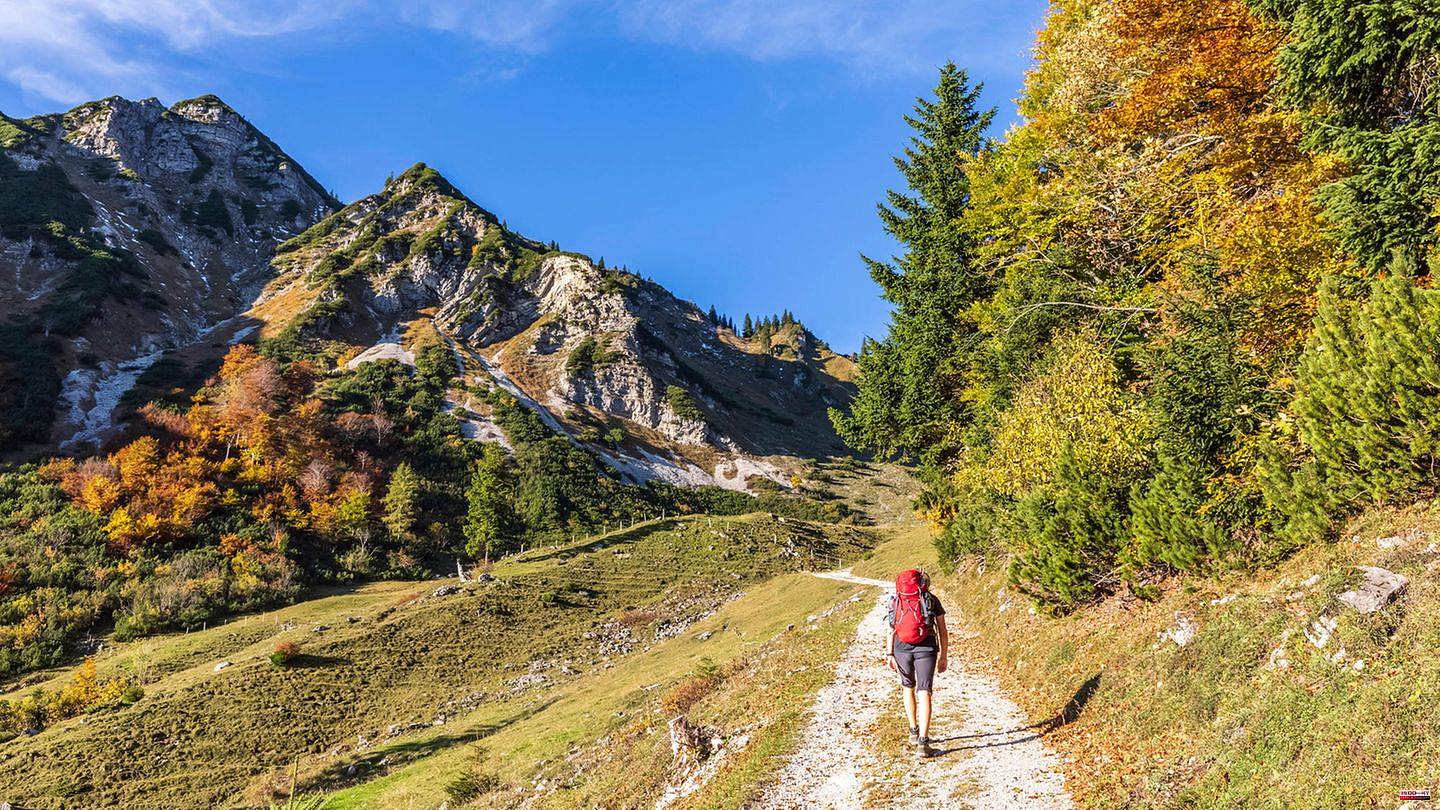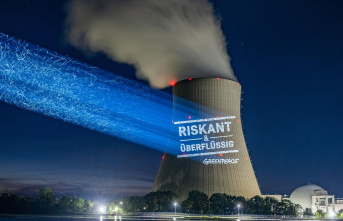Hiking has established itself as a trend sport, whether with or without sticks, the spirited Nordic walking. We make seven route suggestions for autumn hikes that are particularly worthwhile.
This route through the Habichtswald may call itself the "premium route". The certification by the German Hiking Institute guarantees a clearly marked and eventful route through a fairytale landscape where the Brothers Grimm once wrote their stories.
The 85-kilometer hiking trail in the Kassel district connects the largest Hessian juniper heaths on the Dörnberg with the last primeval forests on the steep slopes of the Edersee and explains a lot about culture and nature on boards along the way. Several of the 26 guesthouses and hotels along the route, which leads past bizarre cliffs, decaying castles and through towns with pretty half-timbered houses, lure visitors with affordable packages.
Info: www.habichtswaldsteig.de
When the first fog is still hanging in the Rhine Valley in the morning, the sun can already be seen in the Southern Black Forest Nature Park. Small towns between the Belchen and Feldberg mountains, such as Wieden, are known for climate-neutral holidays: you can get there by public transport, you stay mobile on site with the inclusive guest card, which includes free use of buses and mountain railways in the Black Forest, to get to the starting points of the hikes. We recommend the 18-kilometer tour from Wieden to the Feldberg. However, a minimum level of fitness is required to overcome the difference in altitude of 500 meters.
Info: www.schwarzwald-tourismus.info and www.zumo-schwarzwald.de
Most Harz visitors want to climb the Brocken because the bare summit at 1141 meters is the highest elevation in northern Germany. In its shadow lies part of the Harz mountains in the west, whose places have suffered a decline in tourism many years after reunification.
The ingenious system of small reservoirs, ditches and tunnels that the miners developed to generate energy has just been recognized by Unesco as a World Heritage Site. The paths along these man-made watercourses are particularly pleasant. On the old dam ditch between the towns of Altenau and Torfhaus you can learn a lot about the more than 300-year-old structures of the Upper Harz water shelf in the Harz National Park. Info: www.harzinfo.de and www.hexenstieg.de
There are people who like to run, they just don't like steep climbs. If you are traveling along the German North Sea coast, no hills will get in your way. But instead of walking straight along the sea on a dyke, a hike in the sea is much more entertaining. When the tide goes out, it goes from Cuxhaven-Duhnen through the grey-black silt to the island of Neuwerk. For safety reasons, you should travel the twelve-kilometer route through the Wadden Sea National Park in a group. From Neuwerk, you can either take a ship back to Cuxhaven when the tide is high or you can spend the night in one of the few accommodations, such as the historic lighthouse. It is also possible to continue the mudflat hike the next day to the bird island of Scharhörn.
Info: www.cuxhaven.de and www.nationalpark-wattenmeer.de
A white "R" marks the way: The most traditional Rennsteig begins at the lowest and northernmost point of the route in Hörschel near Eisenach on the middle reaches of the Werra. Over the main ridge of the Thuringian Forest, the adjacent Thuringian Slate Mountains and the northern Franconian Forest, it goes to the upper reaches of the Saale to Blankenstein - a total of 168 kilometers. Directions divide a Rennsteig hike into six stages between 20 and 30 kilometers in length. The starting point for the "Runst", as a Rennsteig hike is called, is Eisenach, other places that offer overnight accommodation are Oberhof and Neuhaus.
Info: //rennsteig.wordpress.com and www.rennsteiglauf.de
An extremely varied circular route begins at the gates of Zurich. The 124-kilometre, well-signposted route around Lake Zurich and Lake Obersee is divided into ten daily stages, some of which run parallel to the shore, but also lead to scenic mountains such as the 1,096-meter-high Etzel. From there you can see the postcard-perfect Swiss landscape with its hills, forests and the perfect infrastructure that hikers can make the most of:
The paddle steamers, trains and S-Bahn take you quickly to the desired section of the route or bring you back to the city. Part of the trail is on the route of the European long-distance hiking trail and the Way of St. James to Santiago de Compostela. Another advantage: At the beginning of autumn, hiking can be combined with a swim: the current water temperature of Lake Zurich is still 17 degrees at Utoquai in the middle of Zurich.
Info: www.zuerich.com
In the extreme west of Austria, in Vorarlberg, lies the Bregenzerwald with its 2000 kilometers of signposted hiking trails. On themed trails, hikers can find out more about the special features of nature and history. Anyone who would like to get to know the hiking area with expert guidance can take part in a guided hike. The local offer includes culinary hikes, herbal hikes, summit tours and also high-altitude trails without luggage, for example through the foothills of the Alps near Sulzberg far to Schönenbach and Au. A tip: If you stay three days, you will receive the Bregenzerwald guest card, which opens the door to free use of many chairlifts, mountain railways and the Wäderbus.
Info: www.bregenzerwald.at
Also read:
- Around the easternmost 4000m peaks of the Alps: Hiking in the face of the Piz Bernina
- Hiking Germany: These are our most beautiful long-distance hiking trails
- Between heaven, water and earth - hiking from Airolo to the upper Valle Maggia












